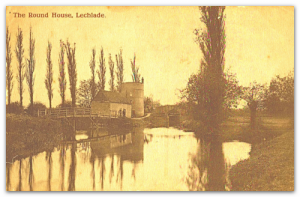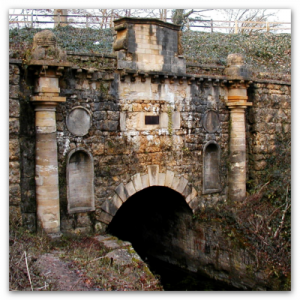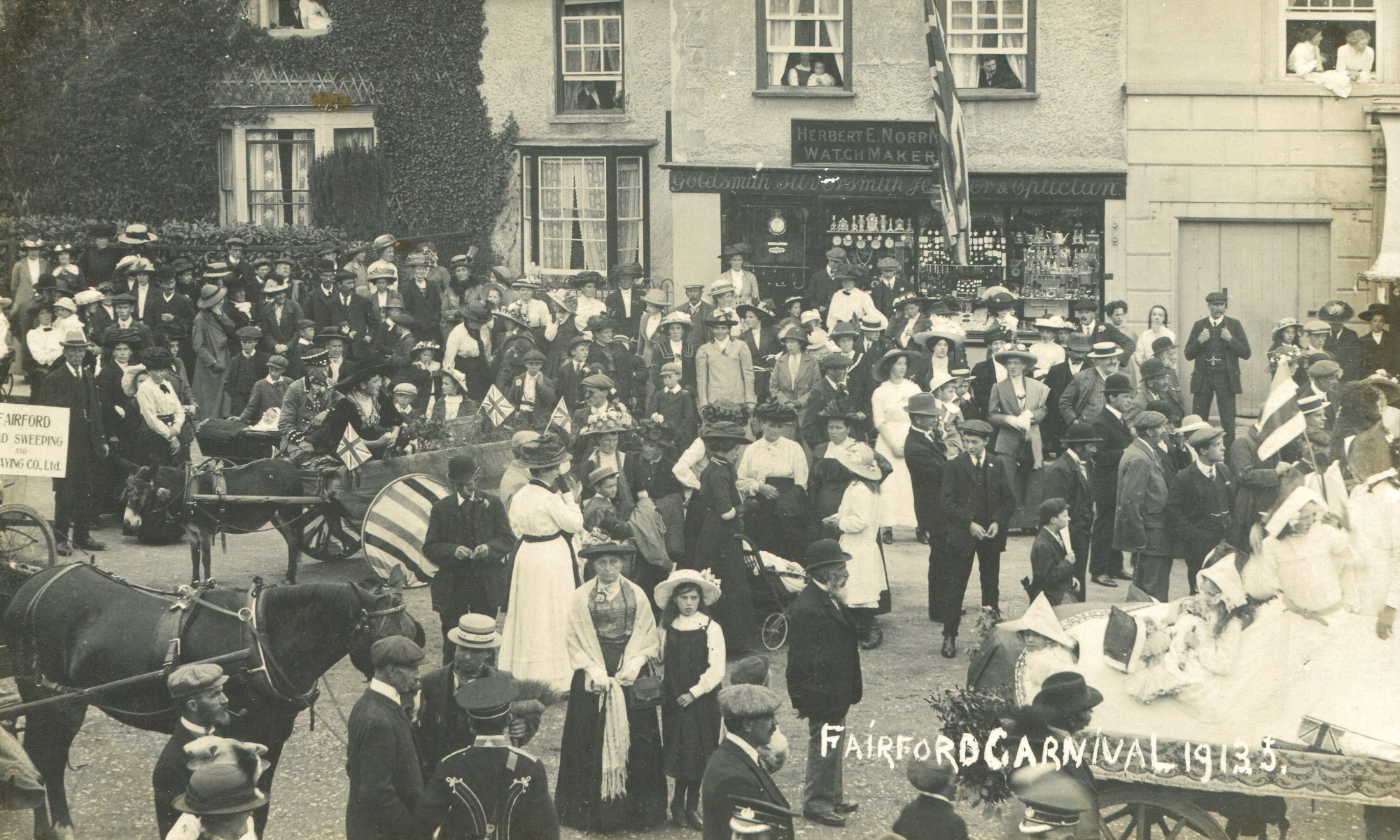On 17th of March 2010,Bruce Hall, of the Cotswold Canals Trust gave a talk to the Society about the 36-mile journey from the Severn to the Thames through the industrial area of the Stroudwater Navigation to the rural Thames and Severn Canal. The canal passed within a few miles of Fairford and traces of it can still be found at Kempsford and Dudgrove today. The most important cargo was coal especially from the Forest of Dean which was needed to supply power to the mills of the Stroud Valley.
The Stroudwater Navigation opened in July 1779; construction of the Thames and Severn Canal started at the western end in 1783 and the first barge entered the canal at Wallbridge in 1785 by which time the canal had probably reached Chalford. The Sapperton Tunnel, the third longest canal tunnel ever constructed in Britain, took five years to complete. In July 1788 much of the tunnel structure was complete when King George III and family visited the site; the stretch from the Coates portal eastwards is called King’s Reach in his honour. The first barge passed through the tunnel in April 1789.
On 19th November 1789 the first barge reached Lechlade, an occasion which was celebrated by a ball, a bonfire and a 12-cannon salute from nearby Buscot Park. However, competition from the railways in the 19th Century was too much for the Thames and Severn and this, along with continuing problems of excessive leakage, caused its closure in 1933.
In 2009 the Cotswold Canals Trust acquired Inglesham Lock and the Inland Waterways Association raised funds to completely renovate the old lock. The Waterway Recovery Group cleared much of the overgrown vegetation from the disused cana

The restoration of the Stroudwater Navigation is well under way. Pictures of abandoned industrial sites show how the site has been transformed into the more modern use of housing and leisure. Bridges have been replaced by Gloucestershire County Council, towpaths reinstated and what were barriers of new roads and motorways have been turned into surmountable challenges. In some places the course of the River Frome has been a useful diversion.
Interesting facts
- The bottom of locks were built concave to withstand water pressure from the vertical walls
- The Canal was originally 7 feet deep but has not been dredged so deeply. Leisure-craft do not need that depth and it was necessary to avoid disturbing the pollution of the sediment from the industrial era
- The flat-bottomed Trow had a removable mast that was used on the tidal reaches of the River Severn up to Worcester. It was 16 feet wide and 68 feet long and built to carry coal and goods only as far as Brimscombe Port. Here the loads were transformed to Thames barges. Later narrow boats 7 feet wide and 70 feet long were more commonly used and as a result the locks were shortened about 1841-42 – this was also a water-economy measure
- The Lengthsmen and their families who lived in the five Roundhouses along the Thames & Severn were responsible for keeping their stretch of water clear and also looked after the lock if there was one
- The new bridge opened at Stonehouse in 1994 was the first ever plastic bridge. The building there was used by Sperry’s Gyroscope during World War II and had a gun emplacement on top
- The Severn-Thames link is 36 miles long with 56 locks, the Thames and Severn from Wallbridge to Inglesham is 28.5 miles long with 42 locks

More can be learnt at the Cotswold Canal Visitor Centre a & Canal Shop, Bell House, Wallbridge Lock, Stroud, GL5 3JS
Open 10am — 1pm Monday — Saturday throughout the year and at any other time that the green flag is flying!
Telephone 07582 286 636 or visit www.cotswoldcanals.com.
Further reading
The Thames and Severn Canal through time by David Viner, 2013
The Stroudwater and Thames and Severn Canals from old photographs. Vols 1-3 by Edwin Cuss and Mike Mills, 2010-3
